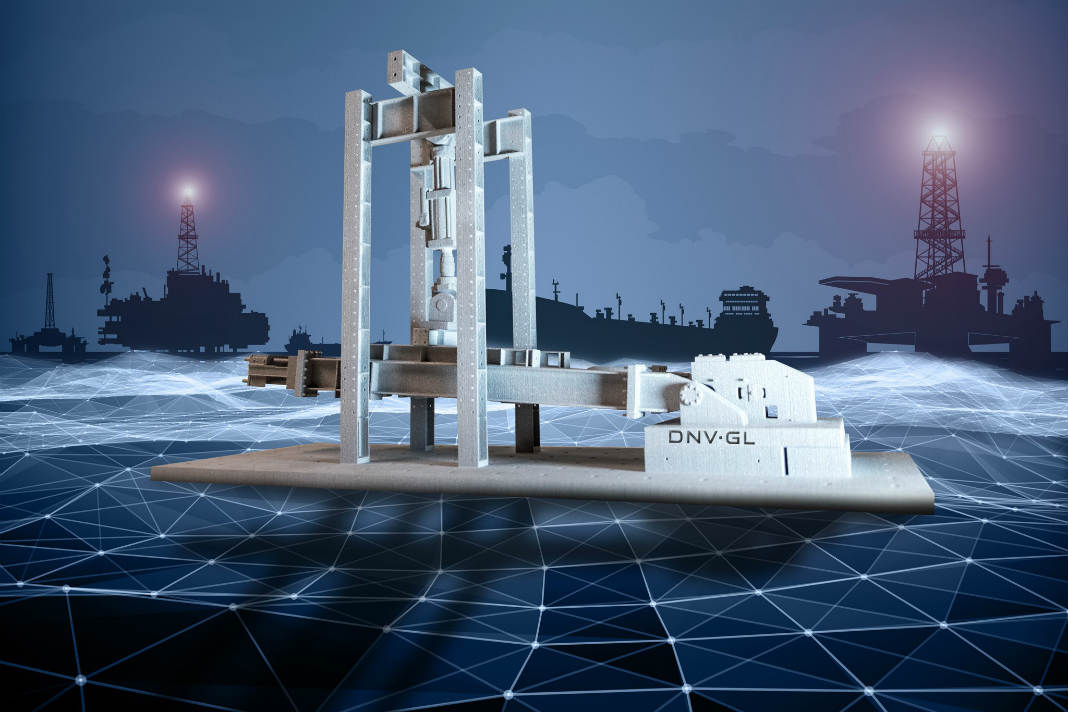DNV GL, an Oslo-based international classification society, has been appointed as the lead researcher of the Maritime and Port Authority of Singapore-initiated Joint Industry Program (JIP) which seeks to accelerate additive manufacturing in the maritime industry.
Within the JIP, DNV GL will collaborate with 10 Singapore Ship Association (SSA) companies to examine the cost and time effectiveness of 3D printed parts for naval vessels. Cristina Saenz de Santa Maria, Regional Manager South East Asia, Pacific & India, DNV GL Maritime, explained:
“Additive manufacturing holds great opportunities for the maritime industry. As the world’s leading classification society our aim is to explore this technology in a way that customers can have the same confidence in AM products as they have in any other approved by class.”
Additive manufacturing and the maritime sector
The Singaporean Government has established the Sea Transport Industry Transformation Map to grow its maritime sector’s value by $4.5 billion and create over 5,000 jobs by 2025. The JIP has identified additive manufacturing as an enabling technology for these objectives.
“This technology can help not only to reduce costs of producing spare parts for vessels but also to radically reinvent the production and logistics including using completely new and more suitable materials,” said Steen Brodsgaard Lund, Chairman of the SSA Technical Committee.
Within the program is the Port Singapore Authority International Pte Ltd (PSA), one of the largest port operators in the world, Singapore’s National Additive Manufacturing Innovation Cluster (NAMIC), and metal additive specialist 3D MetalForge Pte Ltd.
NAMIC has been in a partnership with DNV GL, as well as the Singapore-based shipbuilder, Sembcorp Marine, and A*Star’s Singapore Institute of Manufacturing Technology (SIMTech) since 2017, to 3D print large scale structures for shipping vessels.

DNV GL and the maritime and oil & gas industries
DNV GL published its first classification guideline for additive manufacturing in the maritime and oil & gas industries in 2017. Following this, in September 2018, the company released a class approval of manufacturer (AoM) program for 3D printing manufacturers in the maritime sector.
Commenting on the new position in the JIP, Brice Le Gallo, Regional Manager DNV GL – Oil & Gas and Director of the Global Additive Manufacturing Centre of Excellence in Singapore, said:
“We are very proud to have been selected by MPA and SSA to spearhead this important work in collaboration with major stakeholders and contribute to helping Singapore develop a vibrant AM ecosystem.”

Don’t forget to vote for the 2019 3D Printing Industry Awards.
For the latest maritime additive manufacturing news, subscribe to our 3D printing newsletter and follow us Facebook and Twitter.
Also, visit our 3D Printing Jobs board to find out more about opportunities in additive manufacturing.
Featured image shows Surveyors on a shipbuilding project. Photo via DNV GL.


